- Johann Bernard Petermann was a dock foreman in Hoboken, New Jersey.
- Fritz Kettler was a longshoreman in Brooklyn and Hoboken
- Johannus Jensen was a longshoreman in Hoboken

| Occupations | |
| HOME - AZARIAN INTRODUCTION - BLANCK INTRODUCTION - GOEHLE INTRODUCTION - PETERMANN INTRODUCTION - LANGAN/WALSH INTRODUCTION | |
| Teamsters and Drivers
Louis Blanck and his brother, Henry Blanck, were drivers/teamsters in Hoboken New Jersey. |
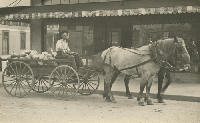 |
| Click on the picture to see more images of teamsters and drivers | |
| Harbor Men
|
|
| Important Boat Men in harbors were: pilots, tub boat men, lighter boat men and canal boat men. See Harbor Men | |
|
Miller
| |
|
Baker
| |
|
Woodcarver
| |
|
Blacksmith
| |
|
Grocers and Provisions Dealers
| |
|
Women's Work
| |
|
Brooklyn Bridge Workers
| |
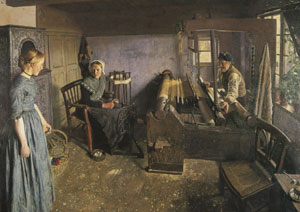 |
Linen Weaver Johann, Gerhard, and Christopher Blanck of Lehe Germany were linen weavers. For information (with pictures) on linen and linen weaving click on the picture |
Coachman
|
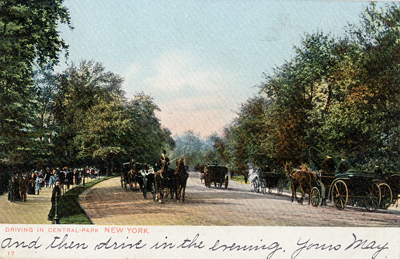 | |
| Collection of Maggie Land Blanck
| |
| Driving in Central Park, New York | |
| Garment Workers
| |
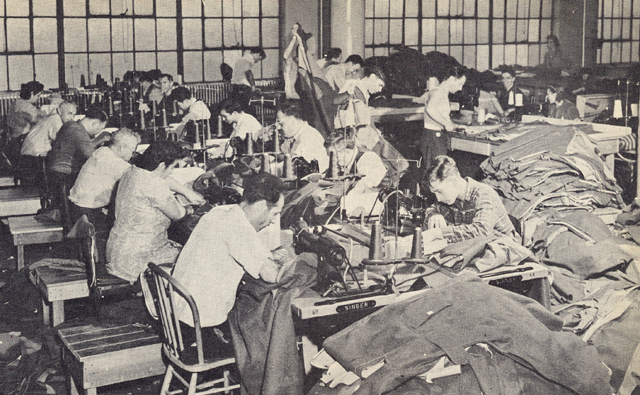 | |
| From New York City, State, and Nation
by Sol Holt, 1955
| |
| Tom Blanck's aunts and uncles worked in "the garment district". The caption with this photo reads: "The making of clothing is New York's leading industry. Its manufacture is done by thousands of small businesses, such as shown above. They produce millions of dollars worth of garments. | |
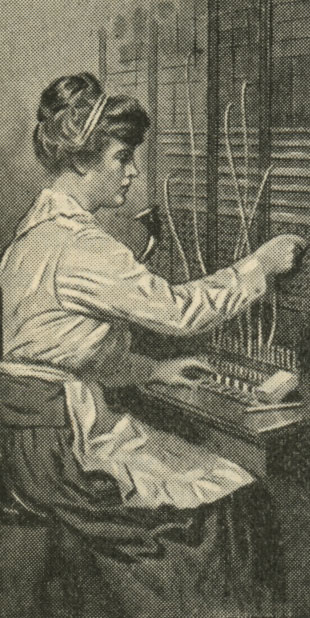 |
Telephone Operator In the 1920 census Isabell Walsh was listed as a telephone operator for a Guarantee Trust Company. |
| Illustrated 1916, Collection of Maggie Land Blanck | |
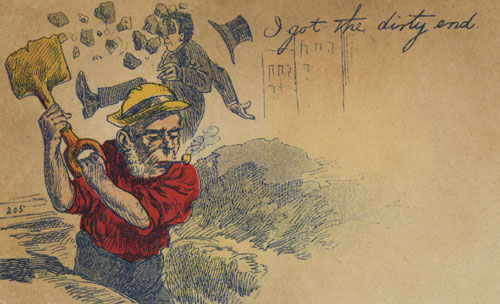 |
Labourer
|
| Postcard collection of Maggie Land Blanck Mathias Langan was listed as a labouer. While most of the 'humorous" Irish postcards depict "Paddy" as a stupid bumpkin I find this card amusing in that the citified gent got his comeuppance. | |
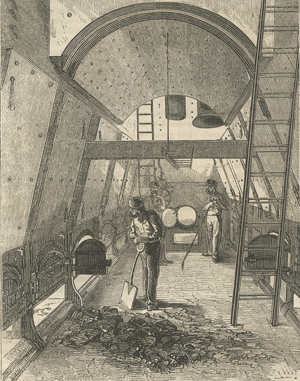 |
Fire-Room
|
| Collection of Maggie Land Blanck, Harper's Monthly, June 1870, THE OCEAN STEAMER
| |
|
Metallic Lathers The sons and grandsons of Pat Langan were "wire lathers" and were involved with the lathers union. See Pat Langan According to marriage, census and other records all of the sons and several of the grandsons of Pat Langan were "lathers":
Metal lathing is used both for fire proofing and decorative purposes. For fireproofing steel columns are wrapped in metal lathing and then covered with plaster or stucco. The metal lath is made up of a sheet of metal containing many small holes. Sometimes a furring system is applied and another layer of metal lathing and plaster is added. Furring is a light frame work which uses metal (or wood) strips to support the finished surface. Metal lath work can also be used to form arches and other shapes. By 1908 interior architectural forms in fire proof buildings were almost exclusively constructed using metal lath.
Metal Lathers have historically performed a variety of duties on the job. In the initial stages of a project they are responsible for establishing a plan and laying out the job. Next, they cut the framing material and apply the metal lath. In the final stage they create openings for air ducts, electrical outlets, and heating and ventilating pipes. Sometimes they create suspended ceiling frames to support the installation of acoustic tile. Other lathers specialize in applying stucco and plaster to walls and ceilings in remodeling projects.Metal Lathers were exposed to asbestos which was used as insulation and fire retardent in buildings and as a component in asbestos stucco (made up of cement, sand and asbestos fibers).
A jurisdictional agreement in 1903 listed the following terms relating to metal lathers. The jurisdictional agreement between the Master League of Cement Workers and the Metallic Lathers' Union of New York is as follows: 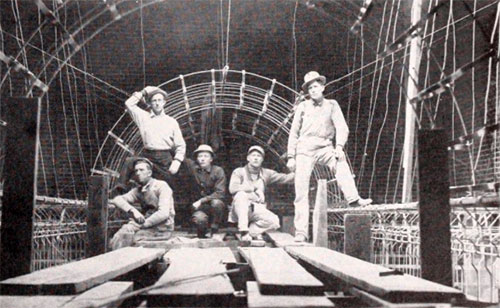 Lathers and electricians circa 1910 - The Lather 1958 The Metallic Lather Union's web site at Metallic Lathers and Reinforcing Ironworkers
|
| If you have any suggestions, corrections, information, copies of documents, or photos that you would like to share with this page, please contact me at maggie@maggieblanck.com |
|
Home
|
| Copyright by Maggie Land Blanck - This page was created in 2004 - Latest update, October 2019 |